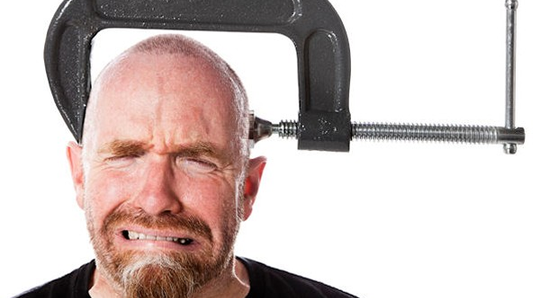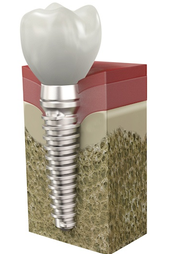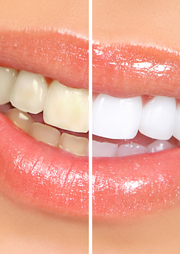Il mal di testa è una delle malattie più comuni. E' difficile trovare qualcuno che non abbia mai avuto mal di testa in qualche momento della vita. Per molti un mal ditesta è un inconveniente doloroso occasionale, facilmente controllabile con farmaci da banco. Per altri, il mal di testa è frequente e debilitante con conseguenze negative sulla vita sociale, lavorativa e sulle relazioni familiari.
Solo un approccio multispecialistico (gnatologo, psicologo, neurologo e osteopata) permette di risolvere anche i casi più gravi.
Il dott. Castroflorio è membro dell'American Academy of Orofacial Pain e sulla base della formazione ottenuta durante un post-graduate course in orofacial Pain presso la Dental School della New Jersey University (USA), ha impostato l'approccio a questi problemi nel nostro studio proprio sulla collaborazione tra i diversi specialisti come si fa nei centri USA più avanzati. Nel nostro studio infatti incontrerete:
Dott. Tommaso Castroflorio, ortodontista e gnatologo è responsabile della diagnosi e terapia, coordina il lavoro del team
Dott. Luca Arturi, psicologo è responsabile della risoluzione degli stati di ansia e depressione che possono accompagnare il mal di testa
Dott. Mauro Banfi, fisioterapista e osteopata è responsabile della terapia manuale di supporto muscolare e articolare, a livello della faccia, del collo e delle spalle.
Abbiamo inoltre attivato una consulenza esterna con un esperto neurologo allo scopo di completare il team di specialisti necessario ad affrontare questi problemi
La International Headache Society (IHS http://ihs-classification.org/it/) classifica il mal di testa in due categorie: cefalee primarie e cefalee secondarie.
Cefalee primarie
MIGRAINE
Migraine is a common disabling primary headache disorder, as documented by several epidemiological studies. It is ranked by the World Health Organization as number 19 among all diseases world-wide causing disability.
Migraine can be divided into two major sub-types. 1.1 Migraine without aura is a clinical syndrome characterised by headache with specific features and associated symptoms. 1.2 Migraine with aura is primarily characterised by the focal neurological symptoms that usually precede or sometimes accompany the headache. Some patients also experience a premonitory phase, occurring hours or days before the headache, and a headache resolution phase. Premonitory and resolution symptoms include hyperactivity, hypoactivity, depression, craving for particular foods, repetitive yawning and other less typical symptoms reported by some patients.
TENSION-TYPE HEADACHE
This is the most common type of primary headache: its lifetime prevalence in the general population ranges in different studies from 30 to 78%. At the same time, it is the least studied of the primary headache disorders, despite the fact that it has the highest socio-economic impact.
Whilst this type of headache was previously considered to be primarily psychogenic, a number of studies that have appeared after the first edition of The International Classification of Headache Disorders strongly suggest a neurobiological basis, at least for the more severe subtypes of tension-type headache.
The division into episodic and chronic subtypes that was introduced in the first edition of the classification has proved extremely useful. The chronic subtype is a serious disease causing greatly decreased quality of life and high disability. In the present edition of the classification (ICHDII), episodic tension-type headache is further subdivided into an infrequent subtype (with headache episodes less than once per month) and a frequent subtype. The infrequent subtype has very little impact on the individual and does not deserve much attention from the medical profession. However, frequent sufferers can encounter considerable disability that sometimes warrants expensive drugs and prophylactic medication. The chronic subtype is of course always associated with disability and high personal and socio-economic costs.
Tension-type headaches also have a muscular component and treating muscular disorders can lead to reduced symptoms and decreased frequency of the headaches.
CLUSTER HEADACHE
Attacks of severe, strictly unilateral pain which is orbital, supraorbital, temporal or in any combination of these sites, lasting 15-180 minutes and occurring from once every other day to 8 times a day. The attacks are associated with one or more of the following, all of which are ipsilateral: conjunctival injection, lacrimation, nasal congestion, rhinorrhoea, forehead and facial sweating, miosis, ptosis, eyelid oedema. Most patients are restless or agitated during an attack.
Secondary headaches are triggered by pathological conditions such as sinusitis, brain tumours, or stroke, and can be generated by several causes. Our practice collaborates with an experienced neurologist who can guide you through the diagnosis and treatment of secondary headaches.









